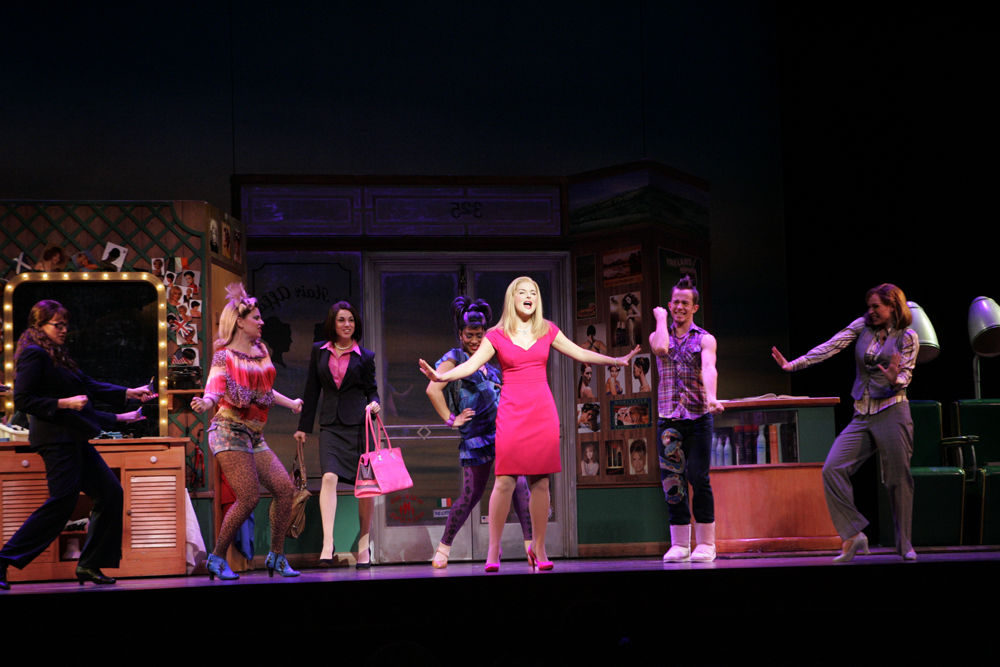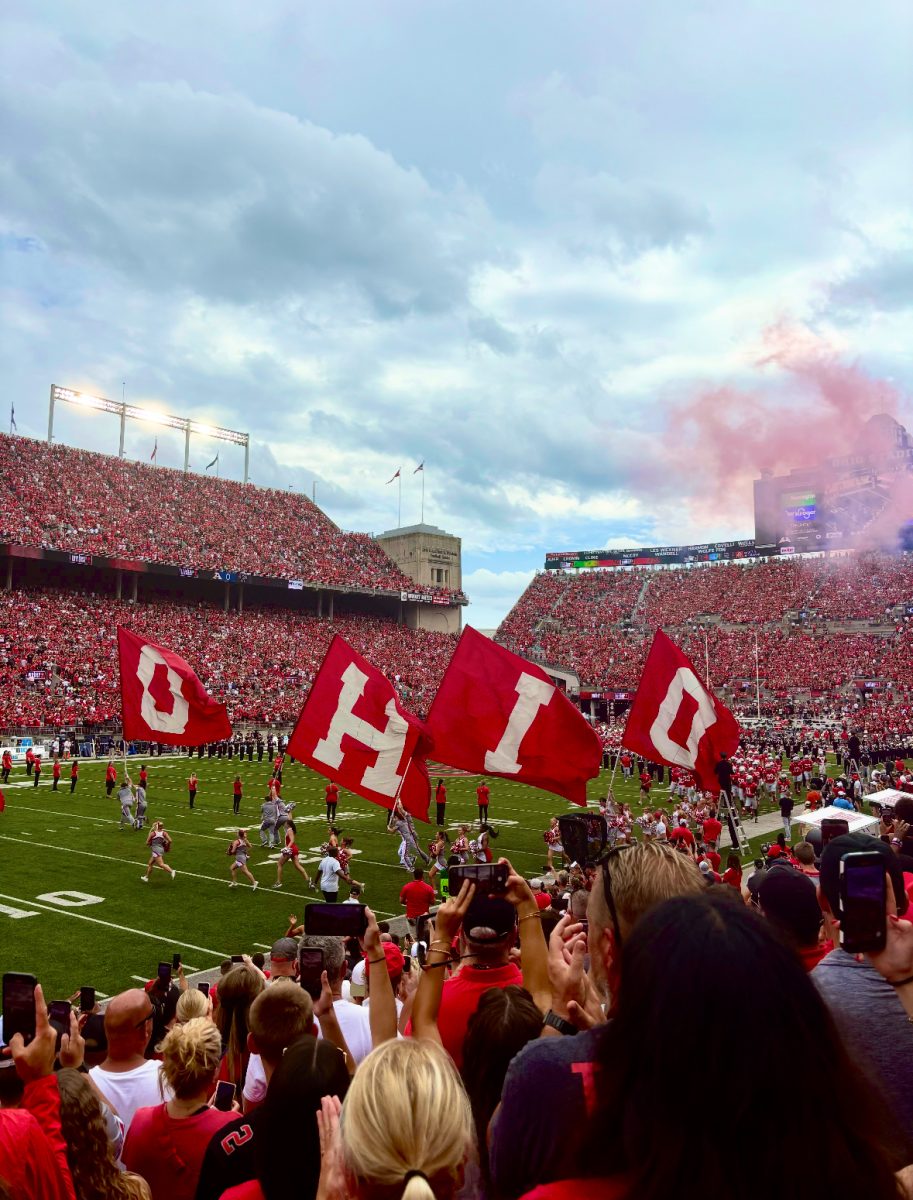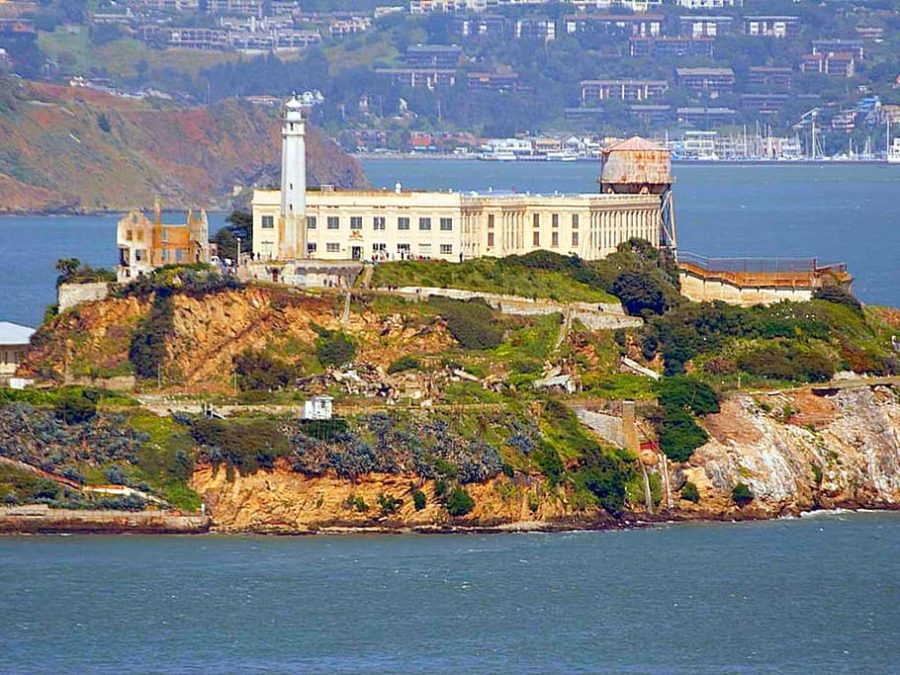In 1775 a Spanish explorer by the name of Juan Manuel de Ayala sailed in the San Francisco Bay and found the island. He named it Alcatraces, and it was later Anglicized to Alcatraz, which means “strange bird.” The island was then set aside in 1850 for military use and was used to house military prisoners. By 1911, the prison was built. For 80 years the U.S. Army used the island as a prison for military prisoners. During this period the U.S. military sent confederate sympathizers, citizens accused of treason during the American Civil War and “rebellious” Native Americans due to the land disagreements. In 1933 it was then transferred to the U.S. Department of Justice for the use by the Federal Bureau of Prisons.
On July 1, 1934, Alcatraz maximum security prison was officially opened.
Alcatraz was opened from 1934 to 1963 and held famous inmates such as the gangster Al Capone and George “Machine Gun” Kelly. There were also 14 escape attempts, and only three were successful. The 29 years it was open as a prison it was home to about 260-275 prisoners. There were originally 348 cells but 12 were removed when they added stairways at the end of each cell block. There were 36 segregation cells and six solitary confinement cells which were known as “the hole.” These were used as punishment if inmates who acted out. There were four blocks inside the main area of the prison which were known as A-block, B-block, C-block and D-block. A-block was used for short term lock up periods when an inmate did not require a full seclusion in the hole. B and C block was where inmates stayed.
Each inmate was assigned a cell where they would sleep and stay. Each cell was five feet by 9 feet and had a sink with running cold water, a cot and a toilet. The segregation cells in D-block were more spacious, but here prisoners were not allowed out of their cell with the exception of one visit to the recreation yard alone.
On the island there were about 300 people who resided on Alcatraz. All of the prison staff members and their families lived on the island. This included top administrators, correctional officers, medical providers and clerks. The living areas for the families and staff were Building #64, three apartment buildings, one large duplex and 4 large wooden houses which were for senior officers. For the families there was a bowling alley, a convenience store and for the kids there was a soda fountain shop. The warden resided in a large house which was adjacent to the cell house and used the inmates with good conduct records for cooking and cleaning his home.
Many of the former inmates said that the conditions at Alcatraz were better than a Federal prison, and several inmates had requested to transfer to Alcatraz from Federal prisons. Alcatraz was designed to teach an inmate to follow rules and regulations to keep them in line. A prisoner had four rights at alcatraz: food, clothing, shelter, and medical care, and everything else was a privilege that had to be earned. A privilege they could earn was time in the recreation yard, music, or painting.
In the earlier years, inmates were not allowed to talk to each other only at meals and recreational periods and if they failed to follow this rule they would be disciplined. Some inmates would empty water into their toilets and create a communication system through the sewage pipe to talk to each other. Punishments for bad behavior would include child labor, lockdowns in the hole and restricted bread and water.
In total there were 14 escape attempts from Alcatraz and a total of 36 inmates were involved in these attempts. Two made it off the island and five were unaccounted for and were assumed to drown. Seven were shot and killed trying to escape and only one had broken back in. one of the most famous escapes included one of the prisoners to break back in. CBS news called it one of the “greatest prison escapes in American history.” The men who pulled were brothers John and Clarence Anglin and Frank Morris. The three prisoners had known each other prior to arriving at Alcatraz. Their cells were adjoining which was where they hatched their plan.

On June 12, 1962, during an early morning bed check, while the guard checked the inmates’ cells there weren’t met with the faces of John Clarence and Frank, but paper mache dummy heads with real hair which made them look like the inmates, which fooled the night guards. The inmates had broken through the vents with a homemade drill made from the motor of a broken vacuum cleaner and squeezed their way through the pipes and crawled up to the prison roof. They then slid down a smokestack and landed on the ground and set sail to the San Francisco Bay on a homemade raft made out of 50 stolen raincoats. After the inmates set sail, they were never seen again. People assume that they drowned in the rough San Francisco waters; others believe they made it to Angel Island. There was evidence of the inmates to still be alive today. There were Christmas cards received from the Anglin family that were signed with Clarence and John’s name which was delivered to their mother three years after their escape and was delivered without a postage. The evidence was handed over to investigators and they had found the handwriting matched but there was no date on the cards. There was also a photo of the brothers which proves that the Anglins may have been alive in the 1970s.
One of the biggest pieces of evidence was dug up, the Anglin’s late brother who was electrocuted during his own escape attempt from an Alabama prison. They used his DNA to see if it matched a set of bones that washed up ashore north of San Francisco in 1963. But when they had it tested, it proved to not be a match. There was also a letter sent to the San Francisco Police from John Anglin in 2013 where he wrote that they all survived the escape but he was the only one living. A handwriting analysis was done on the letter and came back inconclusive. The FBI closed the case on December 31, 1979 and was turned over to the U.S Marshals Service.
The famous prison closed on March 21, 1963 because it was too expensive to keep operating. It was estimated to cost $3-5 million dollars just for restoration and maintenance. It was three times more expensive to run than a regular federal prison. It cost $10 per prisoner per day which adds up since there were about 275 prisoners held there. Alcatraz made it into the news once more when the Native Americans of the Bay Area took over the unused prison as a cultural center after their center caught fire. They then took it out of protest because of the injustices that were done against natives at the former prison. There were three separate occupations, one on March 9, 1964, the second on November 9, 1969 and the third on November 20th 1969. Then on June 10th, 1971, government officials swarmed the island and removed five women , four children and six unarmed men. After this invasion, the occupation was over.
Today the prison is a national park you can visit while you are in San Francisco with an audio tour narrated by former inmates and guards as well as a photo gallery and a beautiful view of the golden gate bridge and the San Francisco skyline and if you look close enough you can still see markings from the Native occupation. This former penitentiary is a San Francisco staple that’s full of interesting history.

























